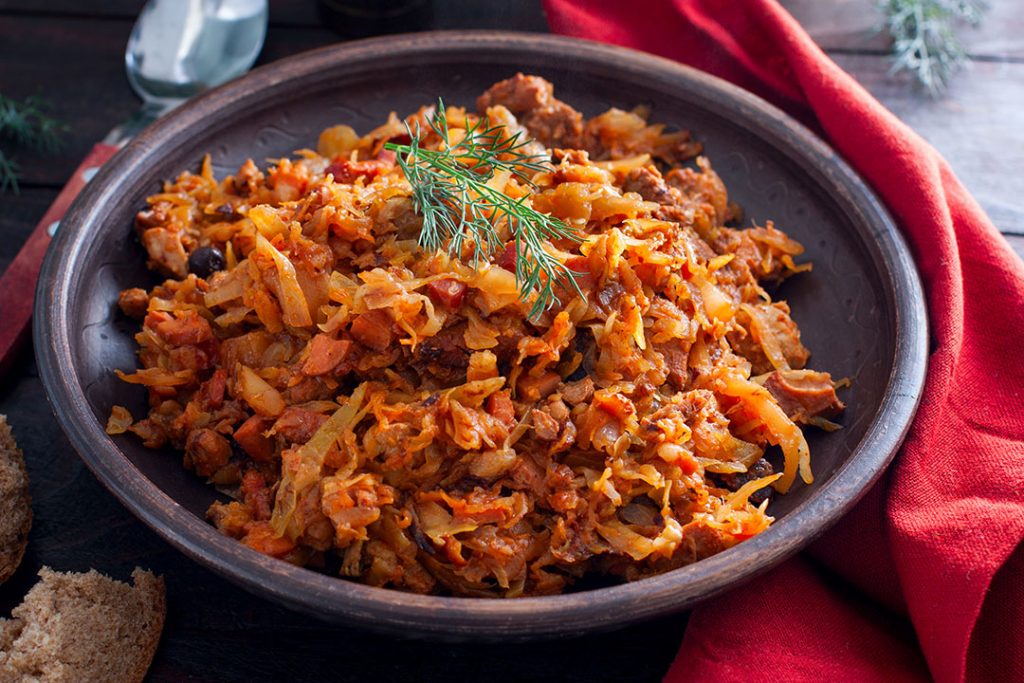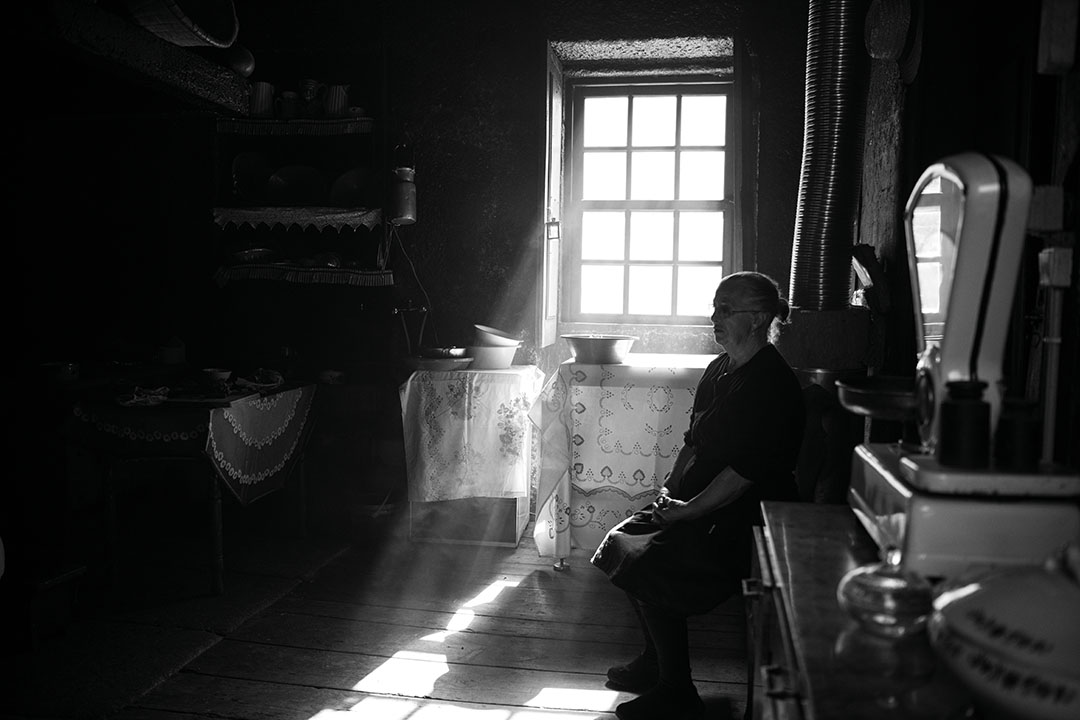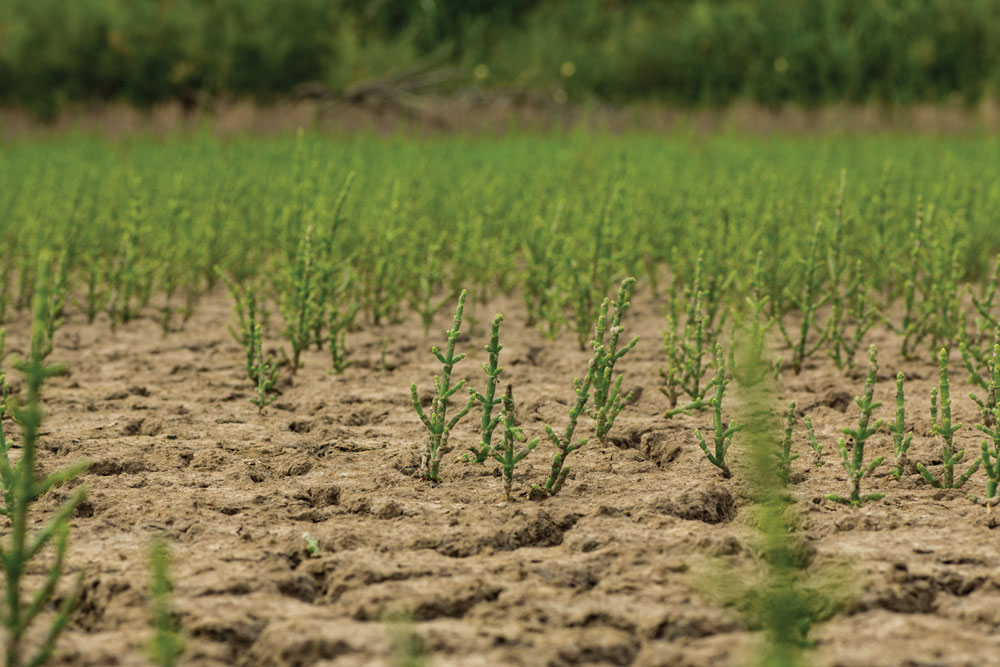
Hidden Wonders
CRYPTIC DELICACY
FURNAS STEW
Dramatic. Awe-inspiring. Mysterious. Volcanoes hold an inexplicable attraction for people. Few phenomena rival the fascination and respect inspired by their savage beauty. And their power, whether dormant or active. They produce the planet’s most fertile soils. Their inner heat embraces the rivers around them like lava. And postcard-ready cities grow up around them. This was also the origin of one of the world’s largest springs, in Vale das Furnas. On 3 September 1630, one of the most violent volcanic eruptions ever known in the Azores shook the island of São Miguel. The modern town of Furnas did not yet exist.
Thanks to the natural wonder of volcanic heat, the Furnas stew is becoming one of the most distinctive flavours of the Portuguese gastronomy.
The only inhabitants in the area were a number of priests and shepherds. Contemporary reports, quoted by the local historian Manuel Luís Maldonado (Angra do Heroísmo, 8 September 1644 – Angra do Heroísmo, 24 October 1711) in his work “Fenix Angrence”, speak of a rumbling so loud that it was heard on the island of Terceira (some 200 kilometres distant), where the population imagined they were hearing “a battle between two mighty armadas”. On the fourth day, the cloud of ash covered the whole sky, bringing such darkness “that without their torches and tapers, people in the street were unable to recognise each other”.

The volcano has been dormant since then, and its crater formed what is now the wonder of the region, the Furnas Lagoon. And, on the banks of the lagoon, one of the most distinctive flavours of Portuguese gastronomy, cooked in the natural heat of the Earth: Cozido das Caldeiras, popularly known as Cozido das Furnas. By burying the pot in a natural oven dug in the volcanic soil (known as the “fumarola”), this dish is a variant of the traditional Portuguese “cozido” (stew), the origins of which date back to the seventeenth century. Apart from the yams, a highly nutritious tuber (rich in carbohydrates, vitamins and mineral salts), the ingredients used to prepare this speciality are the same as elsewhere: meat, “enchidos” (chorizo and blood sausages), potato, carrots and green vegetables – although each cook has his own preference. What makes it so special is how it is cooked.

At a temperature of close to 100 degrees, the pot works its slow magic in the steam released by the boiling volcanic spring. The ingredients are placed in a strict order. From the bottom up: beef, pork and chicken. Then, cabbage (two varieties), potatoes, sweet potatoes and carrots. And then, the island’s own chorizo and blood sausage. The top layer is then covered with cabbage leaves to hold in the heat and moisture. The only seasonings are salt and pepper. When prepared, the pot is lowered into a hole, suspended by a string and wrapped in cloths, to stop the sulphur from spoiling the flavours. Finally, the hole is covered with a lid and refilled with earth.
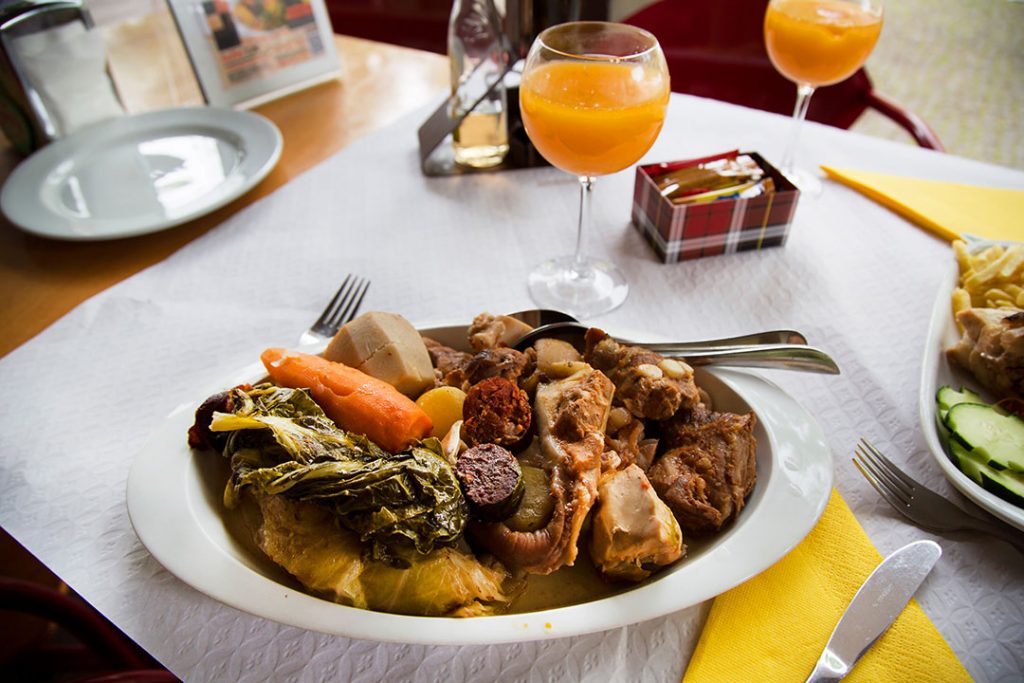
A “ FEAST FOR THE LUCKY FEW”
The cozido cooks slowly for six hours, simmering gently in its natural steam bath, and is then dug up again from the ground as a “feast for the lucky few”. These were the words used to describe it by the island’s great poet, Natália Correia (Fajã de Baixo, São Miguel, 13 September 1923 — Lisbon, 16 March 1993), on a visit to Parque de Terra Nostra with her fellow writer and journalist Fernando Dacosta. “Today you will come with me to one of the few places inhabited by gods. Only initiates are worthy of sharing it,” she told him, before their visit to the stunning botanical gardens.
The ingredients used to prepare this specialty are mostly meat, chorizo and other blood sausages, potatoes, yams, carrots and green vegetables.
WINE OF THE DEAD: A RELIC FROM THE NAPOLEON WARS
Despite what its name suggests, this is not a wine from the beyond, or under a curse. And if the name is unusual, the story of its origins is even stranger. The fault, or virtue, of its discovery belongs to Napoleon Bonaparte, during the second of the three French invasions of the Iberian Peninsula (1807-1811). The Wine of the Dead, said to cheer the living, has lived to tell the story of a wise people, fierce in defence of their heritage. In the face of the advancing armies commanded by General Soult, who looted, pillaged and destroyed everything in their course, the people decided to hide what they valued most.

The local people had the idea of burying their bottles in the ground, beneath the vines, their cellars and wine presses. This became a common practice, especially in the region, where vines had been cultivated and wine produced for many centuries. When the invading armies had been definitively repulsed, the inhabitants were able to retrieve their treasure. When they dug up the wine, they had a pleasant surprise: not only had it not spoiled, but its quality had improved.
Because it had fermented in the dark and at a constant temperature, the wine was well-rounded, had the colour of straw and held an alcohol content of 10 to 11%, becoming naturally sparkling. This accidentally discovered technique gave rise to the tradition, preserved over generations, of burying the wine for at least a year. Hence the name, Vinho dos Mortos, the Wine of the Dead.
Seven thousand bottles of the Wine of the Dead are buried in the cellar every February for sale later in the summer.
ZUR AND HERRING FUNERAL
In times gone by, Żurek or (Żur), a rye flour soup, served with white sausage and boiled eggs cut into halves, was the Lenten staple. When Good Friday finally came around, or the following morning, the populace, weary of their unvarying diet, gave it a pagan burial, complete with songs and poetry. The soup pot was buried or its contents poured out. And the Herring fish was hung out on a tree. Today Żurek is one of the main dishes on the Easter table.
Although the name Żur comes from the German adjective “sauer” – which means sour, stung and acidified – it is considered a specialty of the Polish, Belarusian and Ukrainian cuisines. Rye leaven needs about 5 days for optimal fermentation to ensure this soup’s distinctive flavour. Water, garlic, bay leaves and allspice are added to a few tablespoons of rye flour to create this delicate soup base. Then, all kinds of varieties arise from different flavour combinations. Rye can be boiled either on a vegetable stock or on a meat stock, with sausages and other smoked meats. In Cracow, the delicacy is often cooked on a mushroom broth.
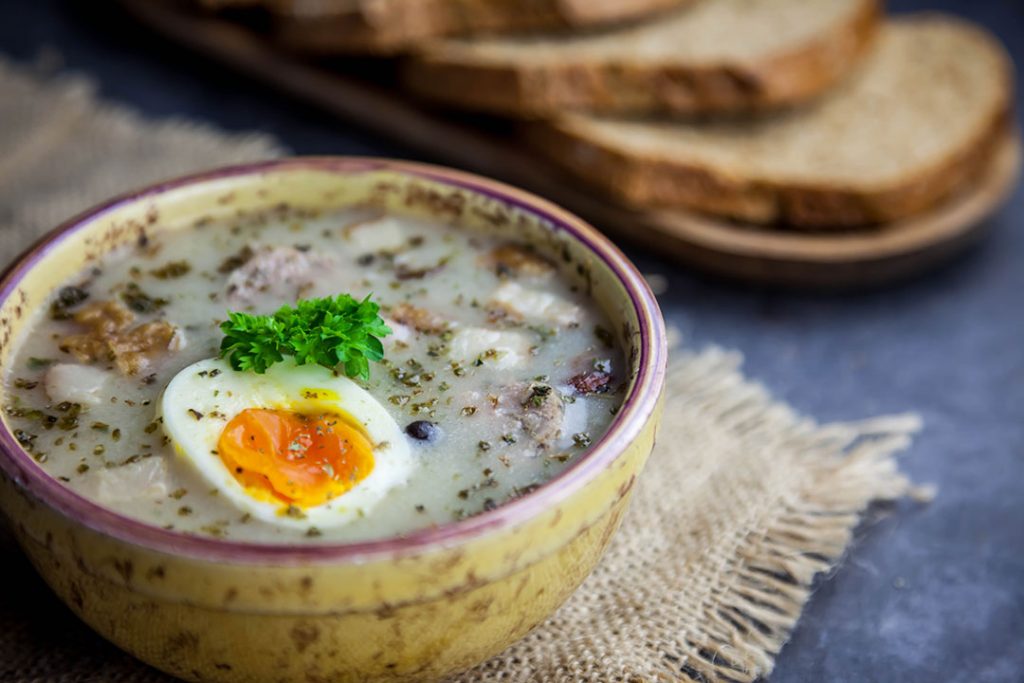
BIGOS
It’s no coincidence that “bigos” means “mess” or “problem” in Polish: there is no standard recipe for this Polish hunter’s stew of the winter months. Leftover pork, wild meats and sausages, mushrooms, cabbage, onion and garlic are some of the most common ingredients. Seasoned with pepper, bay and caraway seeds, it is left to rest, often underground, for several days, to draw out its full flavours. With several hundred years of tradition, this one-pot dish is one of those recipes that changes from home to home, regardless of the region or season. Adding of a splash of dry red wine greatly increases its distinctive taste. It is also said that its flavour depth gets even stronger when Bigos is reheated, after being strongly cooled, or even thawed. It can be served as a hot appetizer or a snack.
